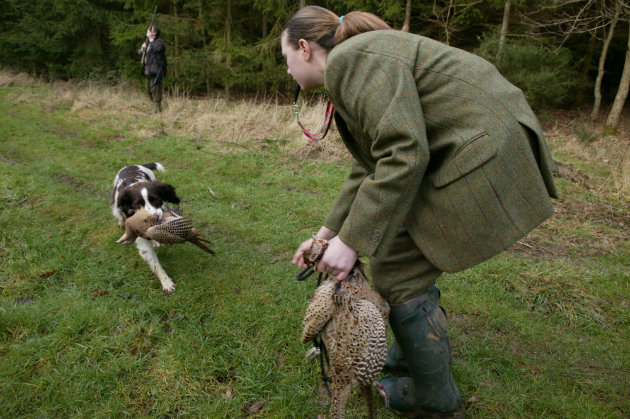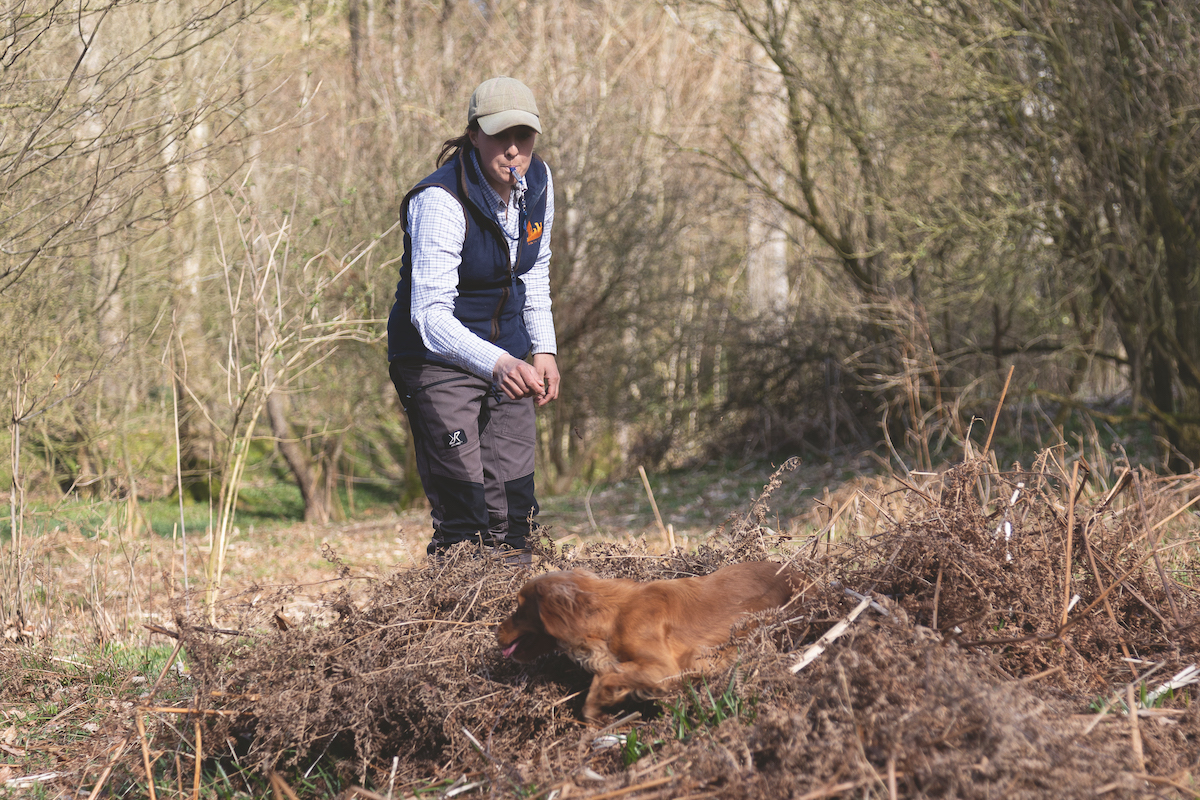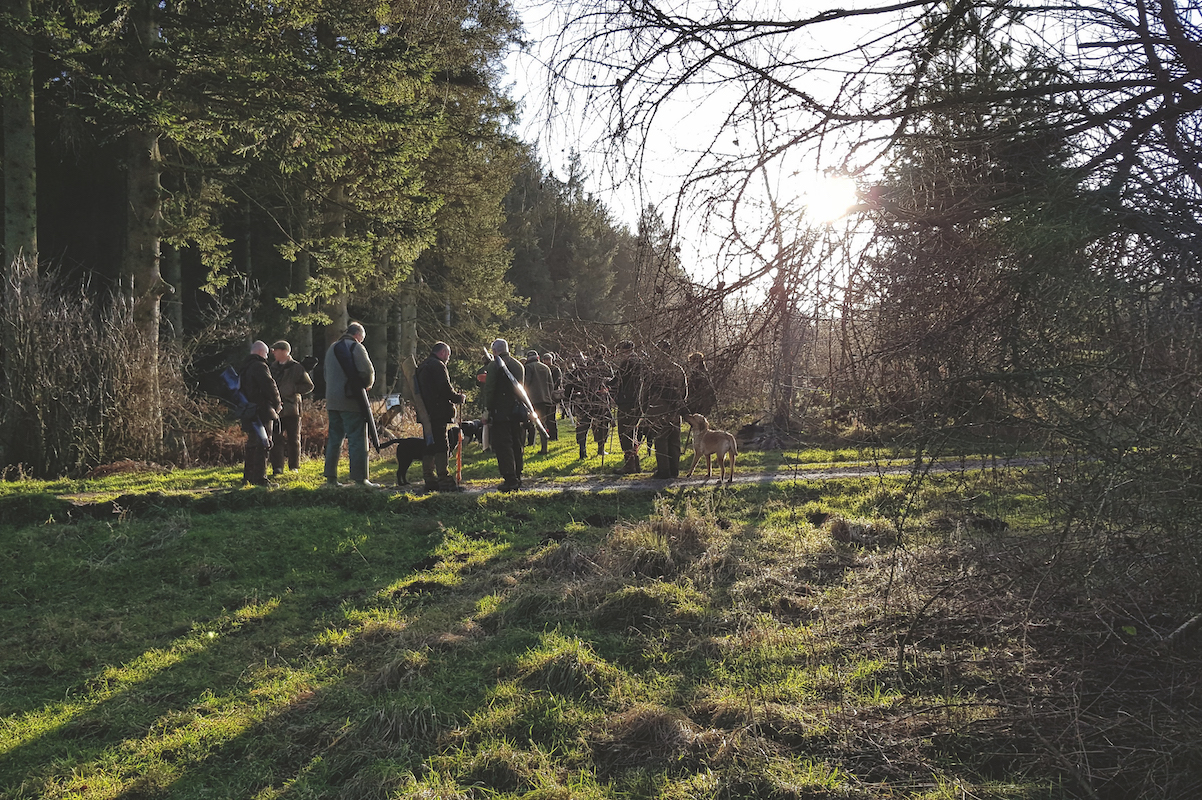“The stop whistle is the brake on your dog and it needs to respond immediately”
How to train your dog to the stop whistle by Fran Ardley

Stop whistle training needs time and attention. It’s something that’s not always easy for the novice trainer to master, let alone the dog. But it’s worth persisting.
If you get the stop whistle right you will be able to control even the most wilful dog. If you don’t master it you could end up being seriously embarrassed by your dog’s behaviour and your failure to manage it.
You may also never get an invitation to that particular shoot again. (Read our FAQs on dog training with a whistle.)

One of the first things people train their puppy to do is to sit. A good way to do this is to lift a bowl slowly above the pup’s head at feed time – the bum can’t help but hit the floor. now introduce the verbal “sit!” command. Once the pup has cottoned on to that we follow it with a single short, sharp (not loud) blast on the whistle. Gradually the puppy connects the noise with the required behaviour which is to sit. This isn’t training, more like ‘conditioning’.
Why stop whistle training is so important
The stop whistle is the brake on your dog and when you use that single sharp blast the dog needs to respond immediately. It needs to stop running or hunting and preferably spin round to look at you, ready to respond to the next command. It can seem complicated process but if you lay down your foundations properly it will make what follows so much easier.
The single blast on your whistle can be called ‘the stop’ or ‘the sit’; I have even heard it called ‘the look at me’ whistle. No matter what you call it, they all mean the same and the dog must be taught to react quickly. A sharp stop whistle is a joy to watch; a sloppy one is like watching an oil tanker trying to slow down – it takes forever.

In the early days of training get your dog to sit on the stop signal
Why and when
The ‘why’ part of stop whistle training is simple: during your gundog’s shooting career you will need to stop it in mid-action countless times. It needs to stop when flushing birds or ground game; it needs to stop when out on a retrieve and you have to redirect it; you may need to stop it from running in; you may just need to stop it from heading towards a potentially dangerous situation. The stop whistle is the ultimate command and it is the single most important thing you can teach your young dog and it can be taught from a relatively early age.
Be consistent
You must be consistent when training the stop whistle. For example, if the dog moves on after you blow your whistle there has to be a consequence. The normal course of action would be to go out to the dog and put it back on the exact spot where it was when you blew the whistle. You must not let the dog get away with ignoring the command; you need to keep calm and, that word again, consistent.
Do not accept the dog moving a few feet forward as this can quickly develop into a few yards and before you know it the dog is off over the horizon with you blowing frantically on the whistle. Be sharp with your command. Do not blow long, drawn-out whistles as this can lead to long, drawn-out stops.
How
The stop whistle exercise is one that you can start to develop at an early age. In fact, you can teach it and it become a habit without the dog even knowing. Provided you continue with it and don’t overdo it this technique will pay dividends later on during the more formal aspects of a dog’s training.
The common failing I see is dogs that either ignore or are sloppy on the stop whistle. Often this is because the handler has been using the command without rewarding the dog or showing any reaction.
As a consequence, the dog develops a ‘what’s the point of stopping, nothing is going to happen’ attitude. They get bored. When they hear the whistle we want them to stop and look at the handler because they know something good is going to happen. We can start as soon as we get them home as pups.
Also, in the early stages I insist that the dog sits rather than stands; many cockers are reluctant to sit on the whistle but during this initial training stage I ensure they get their backsides on the ground.

A puppy will soon learn that sitting on a signal results in a treat
Whistle. Sit. Treat
As your pup grows older it should, hopefully, understand that it sits when it hears the whistle. Now you can begin to develop this a bit further. However, do not overdo this or you can end up making the dog a bit sticky and it can start to anticipate the game. When he is ‘hunting’ about on the grass and is not looking at you, pip your whistle and hopefully the dog will spin round and sit. When this happens, immediately throw out a small biscuit as a reward. It never fails to amaze me how quickly a young dog connects the whistle, sit and treat

Sit the dog up in front of you and then call it in
Recall/stop
It is harder to try to stop a dog when it is coming in towards you. Almost inevitably as you blow the command they will take a few steps before deciding to stop. This is where your consistency is vital. You have to balance the speed of the dog and its reactions; they do not have disc brakes so if they are travelling at speed it will take a few steps to come to a halt. But you must decide whether they are pushing their luck or if it is just momentum carrying them forward. Sit the dog up in front of you at a distance and recall it in. Blow your stop whistle and step forward to the dog with a treat in your hand. As soon as the dog sits throw out the reward. At this stage we are not concerned about steadiness, which comes later.
Sit
One of the first things people train their pup to do is to sit. A good way to do this is to lift a bowl slowly above the pup’s head at feed time – the bum can’t help but hit the floor. Now introduce the verbal “Sit!” command. Once the pup has cottoned on to that we follow it with a single short, sharp (not loud) blast on the whistle. Gradually, the pup connects the noise with the required behaviour, which is to sit. This isn’t training, more like ‘conditioning’

With the dog on a lead, whistle when you stop
Lead/sit
The traditional way of introducing the stop whistle is to have the dog on a lead walking next to you; every time you stop, blow the command and ensure the dog sits. This method certainly works, especially if you haven’t had the chance to condition the dog from the puppy stage. Remember to give the dog plenty of praise when he gets it right. As you progress, try changing your pace with the dog at heel as this can help to keep the dog’s focus and concentration.

Using a ball or dummy will help to sharpen up a sloppy stop
Stop/ball
Once the dog has some experience, a good way to sharpen up a sloppy stop is to get the dog hunting, then blow the command and immediately throw out a ball or dummy. This simulates a flush. The dog should not at this stage run in on the retrieve; you are re-establishing the connection between the stop whistle and something good happening, that is to say the dummy being thrown.

If the dog does what he’s asked, let him have the retrieve
Recall/retrieve
Similar to Recall/Stop but here we are looking for a more dynamic reaction. Either sit the dog up in front of you or recall it while hunting. As it moves towards you blow the whistle and throw out a dummy or ball. If needs be, step in and reinforce your command. Depending on the dog’s reaction, he can have the retrieve or you can pick it up. Again, don’t overdo this but it is a good way of reminding the dog of the connections.
Developing the stop
‘Going off the whistle’ is a term that experienced gundog handlers will know only too well. It can apply particularly to the stop/sit whistle. There are a few ways we can sharpen things up but these will not work unless you have done the groundwork.








